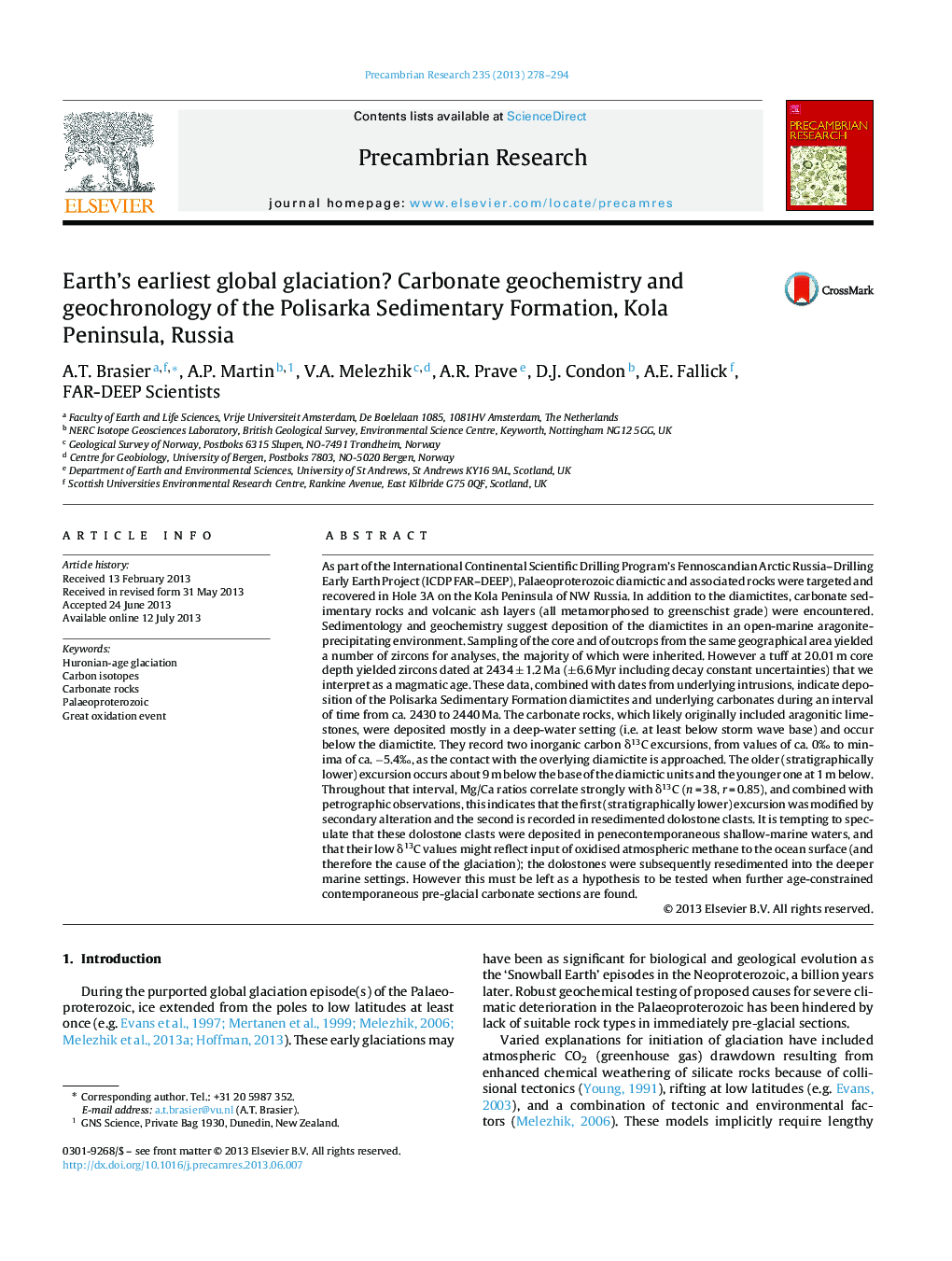| کد مقاله | کد نشریه | سال انتشار | مقاله انگلیسی | نسخه تمام متن |
|---|---|---|---|---|
| 4723154 | 1639639 | 2013 | 17 صفحه PDF | دانلود رایگان |

• ICDP FAR–DEEP Hole 3A targeted Palaeoproterozoic diamictites of the Polisarka Sedimentary Formation of Russian Fennoscandia.
• Zircon U–Pb dating of a tuff above the diamictites yielded an interpreted minimum age of 2434 Ma for the diamictites.
• This new U–Pb age constrains the onset of the Palaeoproterozoic glaciation in Fennoscandia to between ca. 2430 and ca. 2440 Ma.
• Carbonate δ13C analyses of carbonate rocks below the diamictites revealed two excursions to ca. −5‰
• The origins of these excursions are carefully considered.
As part of the International Continental Scientific Drilling Program's Fennoscandian Arctic Russia–Drilling Early Earth Project (ICDP FAR–DEEP), Palaeoproterozoic diamictic and associated rocks were targeted and recovered in Hole 3A on the Kola Peninsula of NW Russia. In addition to the diamictites, carbonate sedimentary rocks and volcanic ash layers (all metamorphosed to greenschist grade) were encountered. Sedimentology and geochemistry suggest deposition of the diamictites in an open-marine aragonite-precipitating environment. Sampling of the core and of outcrops from the same geographical area yielded a number of zircons for analyses, the majority of which were inherited. However a tuff at 20.01 m core depth yielded zircons dated at 2434 ± 1.2 Ma (±6.6 Myr including decay constant uncertainties) that we interpret as a magmatic age. These data, combined with dates from underlying intrusions, indicate deposition of the Polisarka Sedimentary Formation diamictites and underlying carbonates during an interval of time from ca. 2430 to 2440 Ma. The carbonate rocks, which likely originally included aragonitic limestones, were deposited mostly in a deep-water setting (i.e. at least below storm wave base) and occur below the diamictite. They record two inorganic carbon δ13C excursions, from values of ca. 0‰ to minima of ca. −5.4‰, as the contact with the overlying diamictite is approached. The older (stratigraphically lower) excursion occurs about 9 m below the base of the diamictic units and the younger one at 1 m below. Throughout that interval, Mg/Ca ratios correlate strongly with δ13C (n = 38, r = 0.85), and combined with petrographic observations, this indicates that the first (stratigraphically lower) excursion was modified by secondary alteration and the second is recorded in resedimented dolostone clasts. It is tempting to speculate that these dolostone clasts were deposited in penecontemporaneous shallow-marine waters, and that their low δ13C values might reflect input of oxidised atmospheric methane to the ocean surface (and therefore the cause of the glaciation); the dolostones were subsequently resedimented into the deeper marine settings. However this must be left as a hypothesis to be tested when further age-constrained contemporaneous pre-glacial carbonate sections are found.
Journal: Precambrian Research - Volume 235, September 2013, Pages 278–294